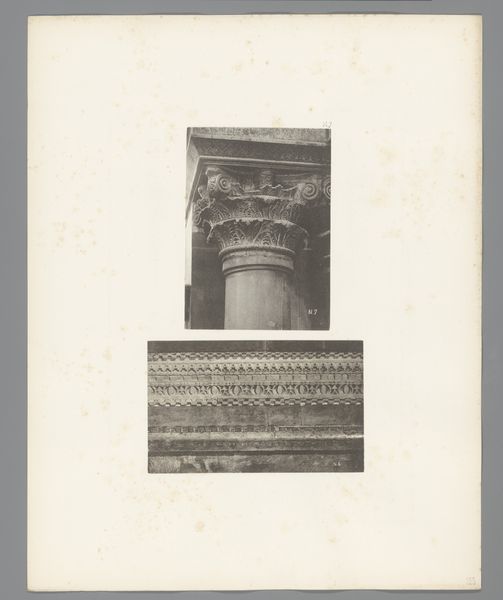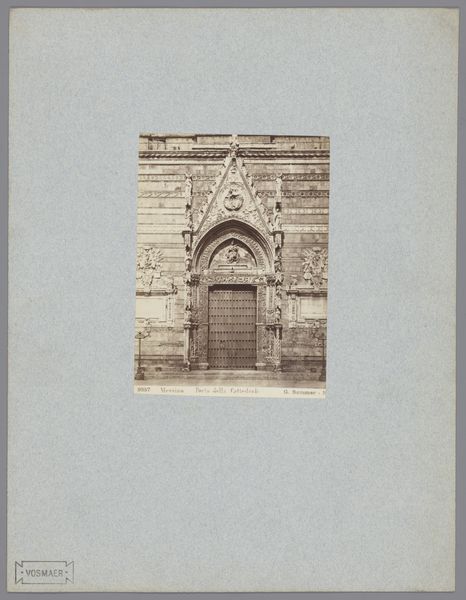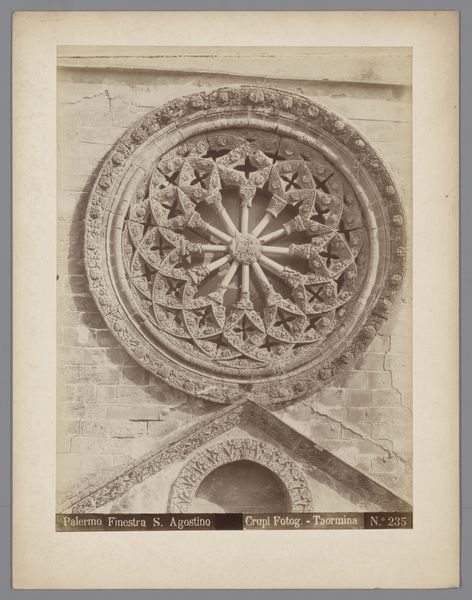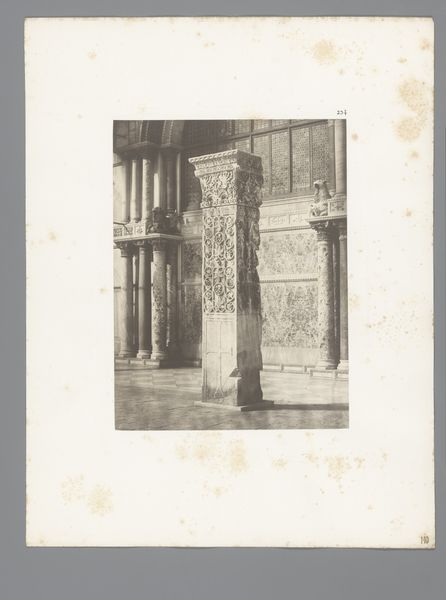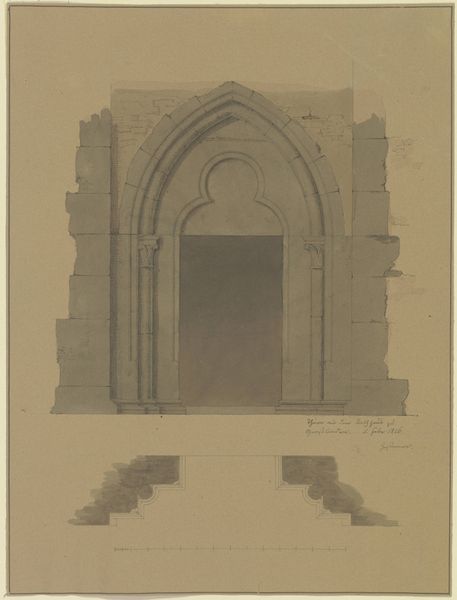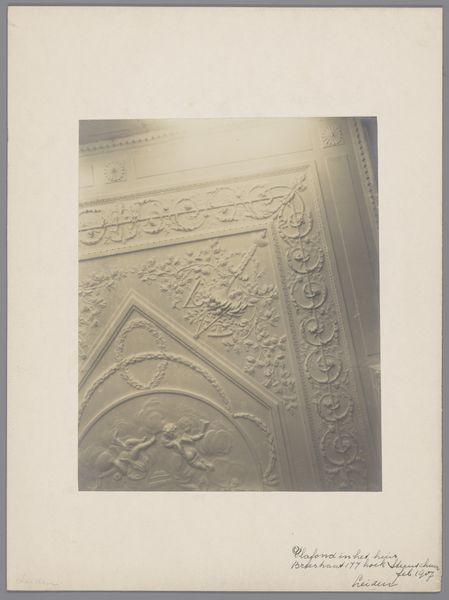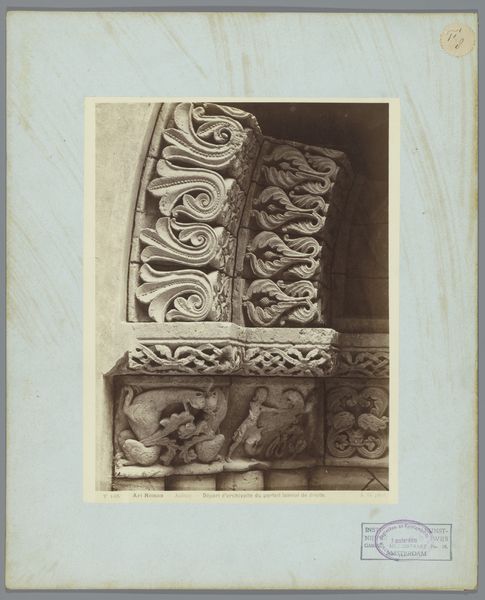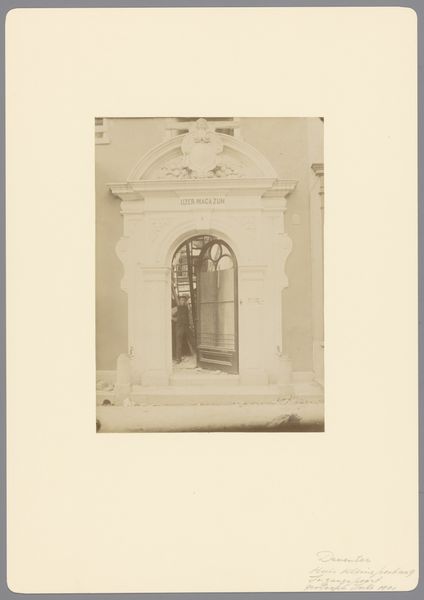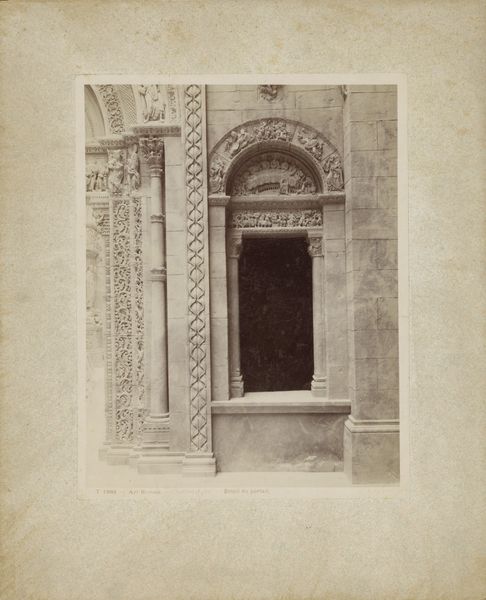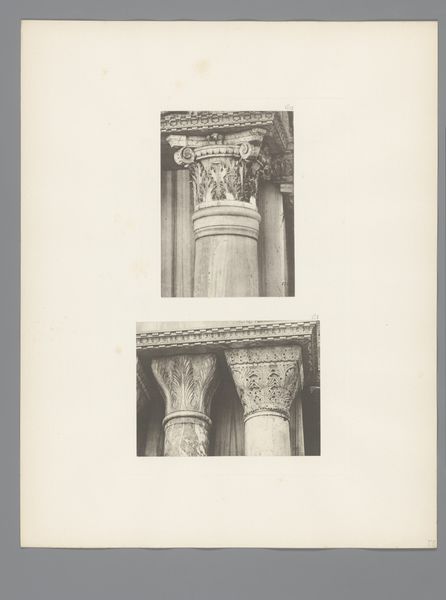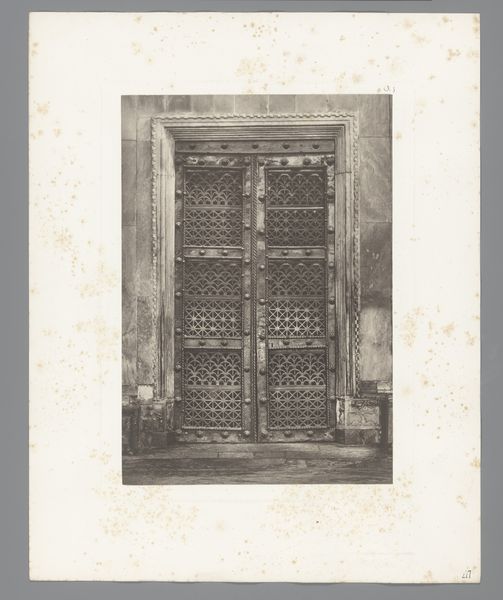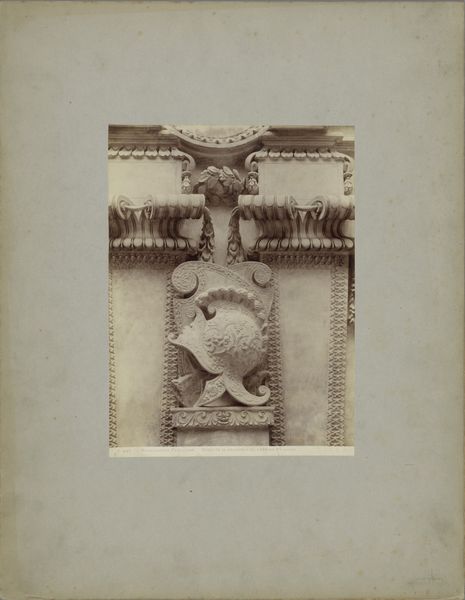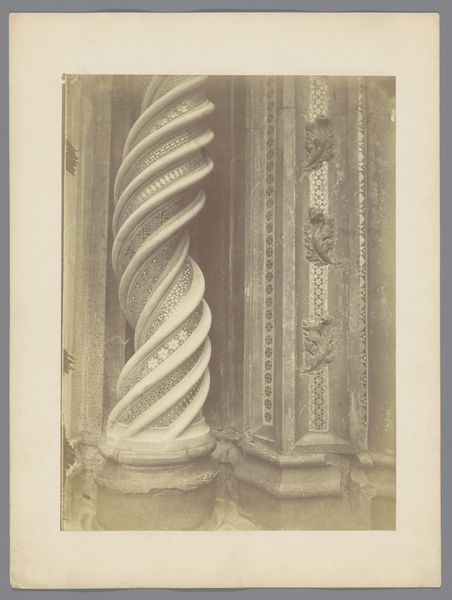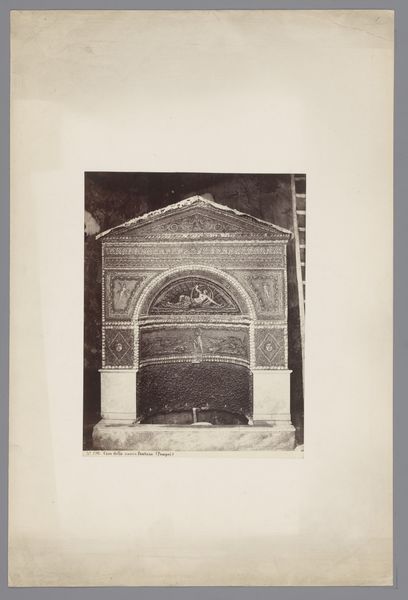
print, photography, architecture
#
portrait
#
natural stone pattern
# print
#
photography
#
romanesque
#
architecture
Dimensions: height 369 mm, width 302 mm
Copyright: Rijks Museum: Open Domain
Editor: This is an albumen print dating from between 1850 and 1900 by Adolphe Giraudon. It’s titled "Noordelijke ingang van de Saint-Pierre in Aulnay," depicting the entrance of a church. It’s so detailed! What's striking to me is how this Romanesque architecture, once a symbol of religious authority, is now presented and consumed as a photograph, a commodity. What do you make of this photograph? Curator: You’ve hit on something crucial there. The photograph does not merely *represent* the church; it transforms it into a visual artifact ready for circulation. Consider the cultural role of these photographic reproductions in the late 19th century. They became increasingly popular due to the rise of tourism. Churches, previously at the center of community life, began to be viewed as monuments, destinations. Editor: So, is Giraudon commenting on that shift? Or simply documenting it? Curator: I think it’s likely a combination. Photography allowed for widespread documentation of architectural styles and techniques previously only accessible to local people or scholars who travelled great distances to examine them firsthand. What choices do you think Giraudon made, from framing to exposure, that might shape how we *consume* this monument today, in our post-industrial moment? Editor: I suppose that by cropping out much of the surroundings and focusing so intently on the entrance, the artist directs our gaze – and perhaps even elevates it. I can really appreciate Romanesque architecture. Before photography, it might’ve felt less accessible. Curator: Precisely. Giraudon’s photograph encapsulates a crucial shift: the democratization of art and architectural experience. The print allowed this church’s image, imbued with history, spirituality, and architectural innovation, to enter private collections. Editor: It's fascinating to see how this artwork captures a moment of transition in art consumption and accessibility! Thanks. Curator: Indeed! Considering the history and societal factors surrounding the photograph reveals its depth.
Comments
No comments
Be the first to comment and join the conversation on the ultimate creative platform.
